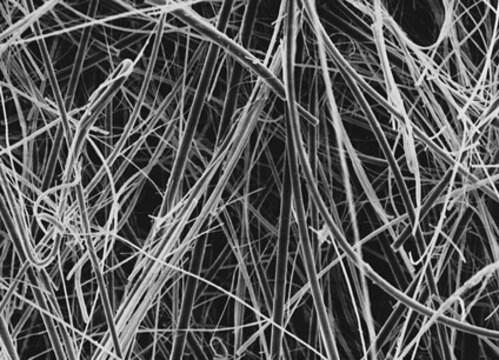APFC04700
Glass Fiber Membrane Filter, 1.2 μm Pore Size
Millipore, filter diam. 47 mm, hydrophilic
Synonym(s):
Glass Fiber Filter without binder
About This Item
Recommended Products
material
glass fiber membrane
plain filter
white filter
Agency
suitable for ISO 21675 2019
description
1.2 µm pore size, hydrophilic glass fiber, 47 mm diameter
sterility
non-sterile
feature
hydrophilic
manufacturer/tradename
Millipore
parameter
1.2 mL/min-cm2 water flow rate
500 °C max. temp.
filter diam.
47 mm
thickness
240 μm
gravimetric extractables
300%
pore size
1.2 μm pore size
90 % porosity
shipped in
ambient
Looking for similar products? Visit Product Comparison Guide
Application
- Removal of fine particles and microorganisms
- Determining total suspended solids
- Filtering proteins or nucleic acid TCA precipitates
- Collecting cells and microorganisms
- Microplastics analysis grade water
- Microplastics analysis
Features and Benefits
- Glass Fiber Filter without binder retains their structural integrity up to 500 °C heating.
- Applicable for the filtration of hot gases and gravimetric analysis.
- Greater retention for fine particulate and microorganism removal than type APFA filter.
- Enables total suspended solids determination in drinking water.
- Applicable for filtering proteins or nucleic acid trichloroacetic acid (TCA) precipitates and for the collection of cells and microorganisms.
Other Notes
- Organism Retention: Microorganism
- Mode of Action: Filtration (size exclusion)
- Application: General laboratory filtration
- Intended Use: Retention or removal of biological contaminants
- Instructions for Use: Sterilizing filtration of a liquid through a membrane with a 0.2 μm (or smaller) pore size effectively removes biological contaminants, including bacteria, mold and yeast. For the selective retention of larger biological contaminents, liquid filtration through membranes with 0.45 μm (or larger) pore sizes may be used to trap and support microorganism growth for subsequent culture and analysis
- Storage Statement: Store in dry location
- Disposal Statement: Dispose of in accordance with applicable federal, state and local regulations.
Certificates of Analysis (COA)
Search for Certificates of Analysis (COA) by entering the products Lot/Batch Number. Lot and Batch Numbers can be found on a product’s label following the words ‘Lot’ or ‘Batch’.
Already Own This Product?
Find documentation for the products that you have recently purchased in the Document Library.
Customers Also Viewed
Articles
An overview of microplastics, testing regulations, and filter selection for microplastic sample collection, preparation, and analysis.
Our team of scientists has experience in all areas of research including Life Science, Material Science, Chemical Synthesis, Chromatography, Analytical and many others.
Contact Technical Service







